In the vibrant state of Oklahoma, the enchanting world of hummingbirds comes alive with the mesmerizing presence of eight distinct species.
These agile avian wonders, known for their iridescent plumage and rapid wing beats, add a touch of natural brilliance to the region’s diverse landscapes.
Oklahoma is a haven for these tiny yet extraordinary creatures, from the lush woodlands to the sun-kissed meadows.
Each hummingbird species contributes uniquely charm, creating a kaleidoscopic tapestry of colors and melodies. As they flit gracefully from flower to flower, these delicate marvels play a crucial role as pollinators in the local ecosystem.
Join us on a brief exploration of the eight hummingbird species that grace Oklahoma’s skies, painting the air with their fleeting elegance and contributing to the state’s rich biodiversity.
8 Hummingbirds in Oklahoma
In Oklahoma’s diverse landscapes, hummingbirds weave a tapestry of vibrant colors and melodies.
With over a dozen species, from the iconic Ruby-throated to the exotic Mexican Violetear, these agile wonders contribute to the state’s rich biodiversity, captivating all who encounter their fleeting elegance.
1. Ruby-throated Hummingbird
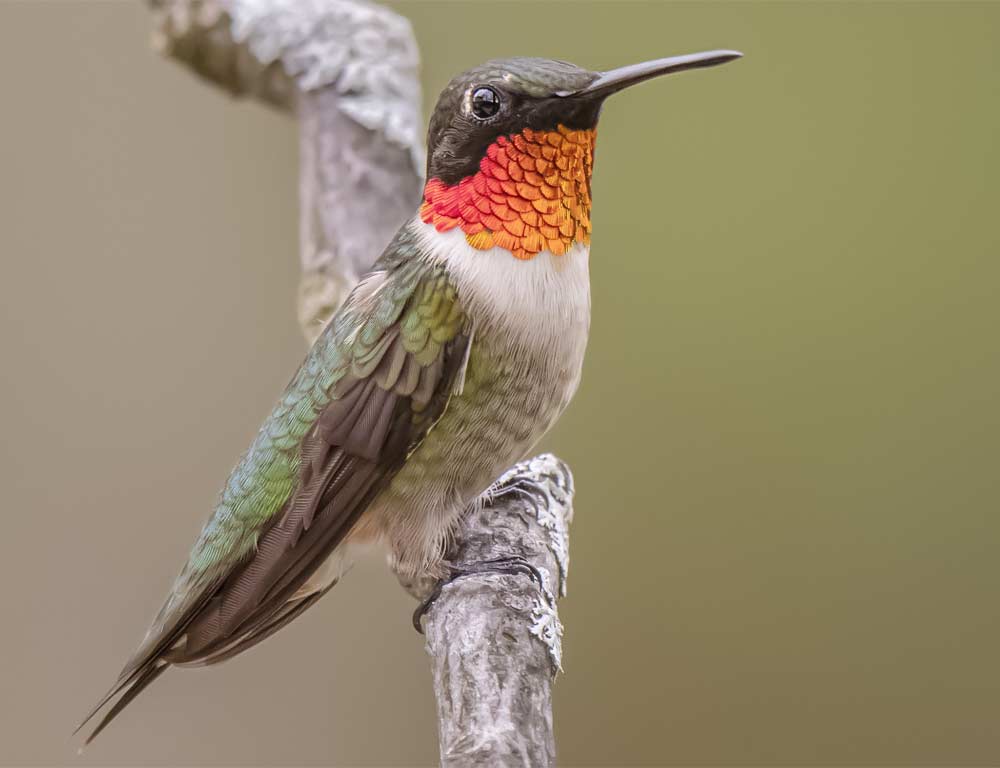
- Scientific Name: Archilochus colubris
- Population: Abundant in Eastern North America
- Life Span: 3 to 5 years
- Size: Approximately 3 to 3.5 inches
- Weight: About 2 to 20 grams
- Food: Primarily nectar, supplemented with insects and spiders
- Wingspan: 3 to 4 inches
The Ruby-throated Hummingbird, with its iridescent green feathers and, as the name suggests, a vibrant ruby-red throat, is a common sight in Oklahoma.
These agile birds are known for their remarkable migratory feats, traveling thousands of miles between their breeding grounds in the eastern United States and wintering areas in Central America.
Despite their tiny size, these hummingbirds are fierce defenders of their feeding territories, engaging in dazzling aerial displays to assert dominance.
Their diet primarily consists of floral nectar, which they extract with their specialized long bills, complemented by occasional meals of insects and spiders.
The Ruby-throated Hummingbird’s captivating lifestyle revolves around its ceaseless quest for nourishment and the intricate courtship dances that add a touch of enchantment to Oklahoma’s natural landscape.
2. Black-chinned Hummingbird
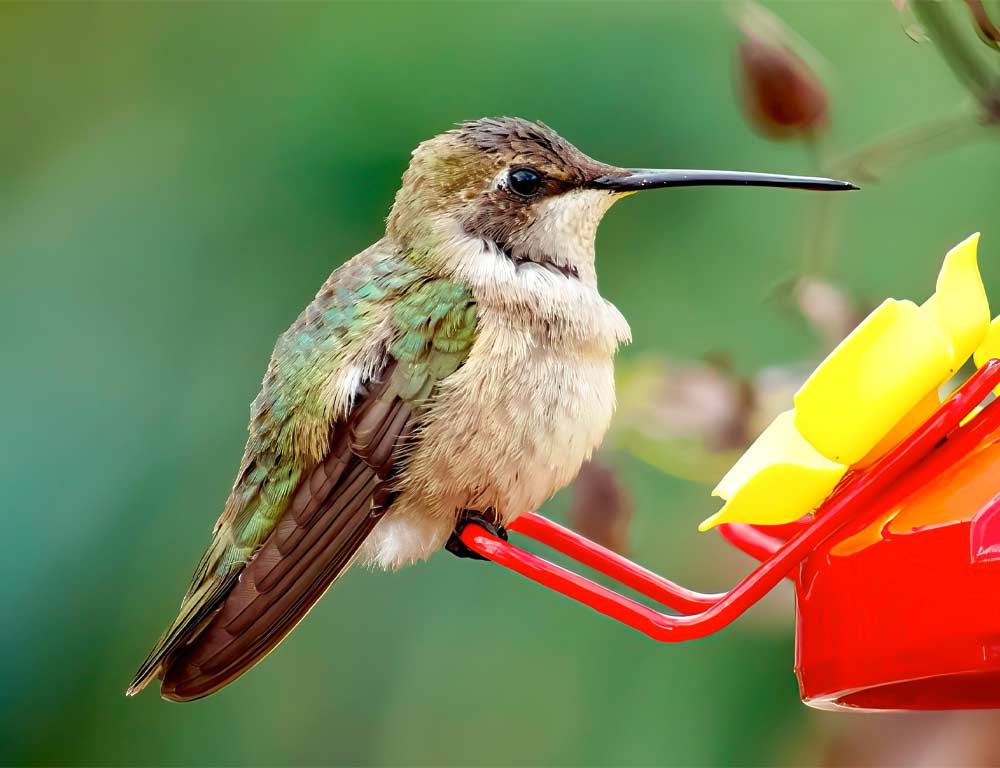
- Scientific Name: Archilochus alexandri
- Population: Common in western North America
- Life Span: 3 to 5 years
- Size: Approximately 3.5 to 4 inches
- Weight: About 3 to 6 grams
- Food: Nectar, supplemented with insects and spiders
- Wingspan: 4 to 5 inches
The Black-chinned Hummingbird, distinguished by its glossy black throat, is a prevalent species in the western regions of North America, including Oklahoma.
These petite birds exhibit remarkable agility and are often observed darting between flowers with precision. With a similar dietary preference for nectar, these hummingbirds also play a crucial role in pollination as they sip from blossoms.
Despite their diminutive size, Black-chinned Hummingbirds embark on impressive migrations, traversing vast distances to reach their breeding and wintering grounds.
Their lifestyle showcases a delicate balance between the constant quest for sustenance and the intricacies of courtship displays, contributing to the ecological vibrancy of Oklahoma’s diverse habitats.
3. Rufous Hummingbird
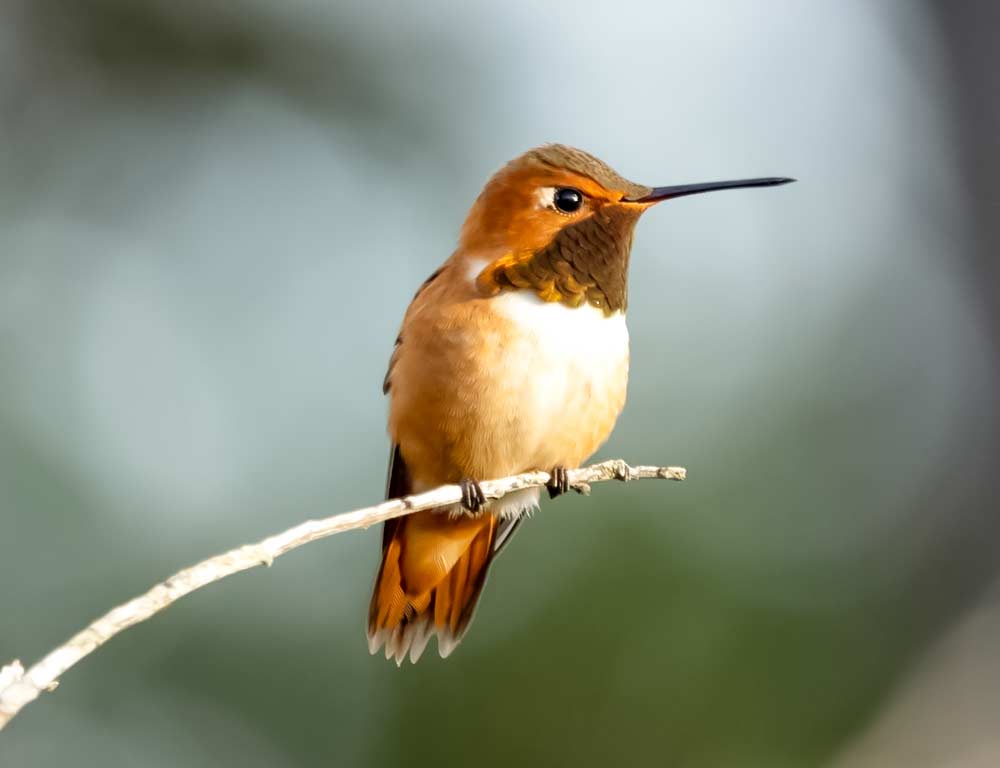
- Scientific Name: Selasphorus rufus
- Population: Common in western North America, occasional in the East
- Life Span: 3 to 5 years
- Size: Approximately 3 to 3.5 inches
- Weight: About 2.5 to 5.5 grams
- Food: Nectar, supplemented with insects and spiders
- Wingspan: 4 to 4.5 inches
The Rufous Hummingbird, adorned with a vibrant coppery-orange plumage, is a charismatic inhabitant of Oklahoma, particularly in the western regions.
Known for their remarkable migratory journeys, these hummingbirds undertake one of the longest migration routes of any bird, traveling from their breeding grounds in the western United States to wintering areas in Mexico.
Rufous Hummingbirds exhibit an energetic foraging behavior, hovering and extracting nectar with their specialized bills. Their lifestyle is marked by a relentless pursuit of food sources, frequently stopping at flowering plants.
They contribute significantly to the ecological balance as pollinators, showcasing the dynamic interplay between these captivating birds and Oklahoma’s rich natural tapestry.
4. Broad-tailed Hummingbird
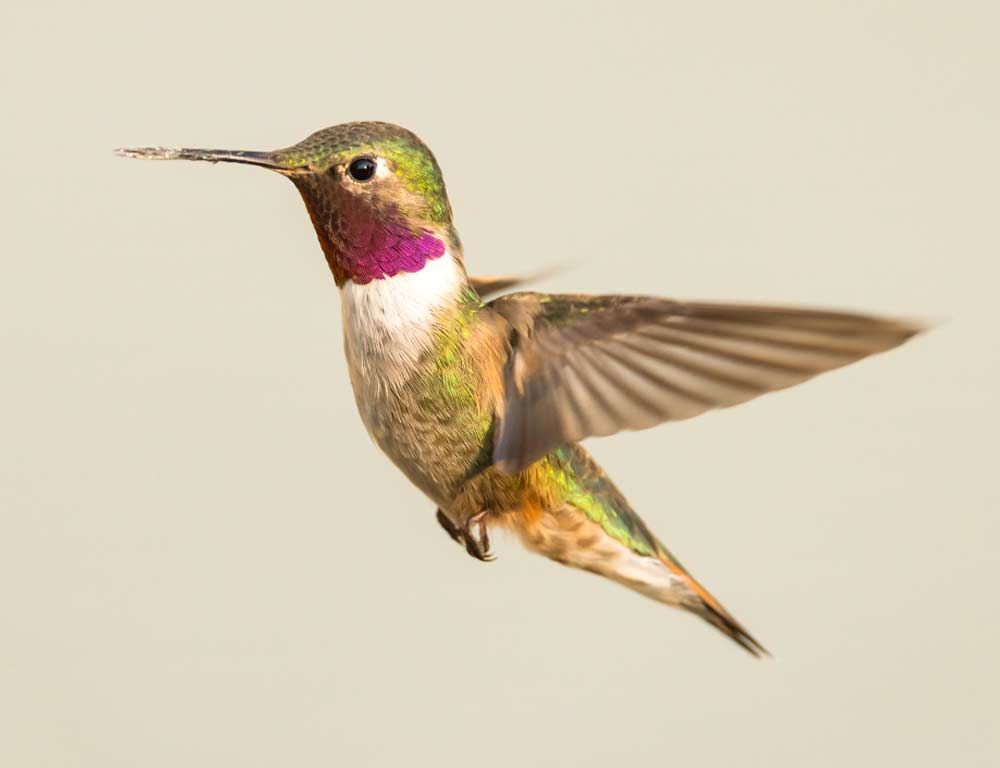
- Scientific Name: Selasphorus platycercus
- Population: Common in the western United States
- Life Span: 3 to 5 years
- Size: Approximately 4 to 4.25 inches
- Weight: About 3 to 6 grams
- Food: Nectar, supplemented with insects and spiders
- Wingspan: 5 to 5.5 inches
The Broad-tailed Hummingbird, characterized by its vibrant green plumage and distinctive metallic trill, graces the landscapes of the western United States, including portions of Oklahoma.
These medium-sized hummingbirds are known for their remarkable aerial displays, which often involve steep dives and rapid ascents. Their diet predominantly consists of nectar, which is crucial in pollination as they visit various flowering plants.
Migratory in nature, Broad-tailed Hummingbirds undertake significant journeys, traveling to higher elevations during the breeding season and migrating to lower altitudes in the winter.
Their lifestyle is a testament to the delicate balance between foraging for sustenance and engaging in intricate courtship rituals, contributing to the ecological diversity of Oklahoma’s natural habitats.
5. Calliope Hummingbird
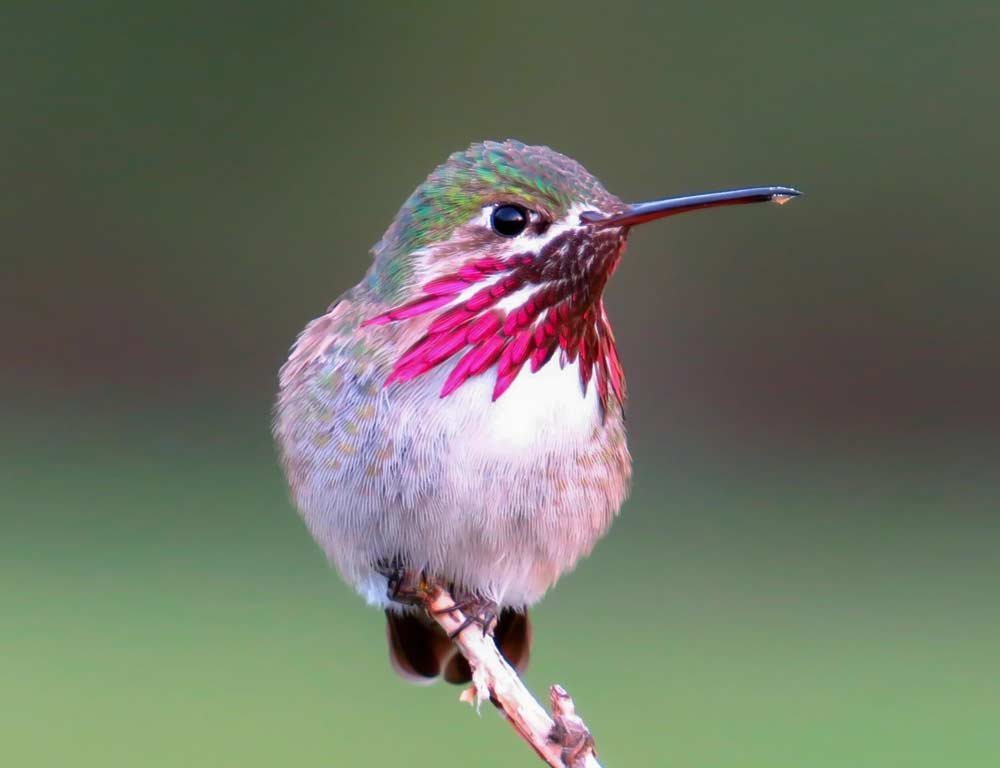
- Scientific Name: Selasphorus calliope
- Population: Common in the western United States, rare in the East
- Life Span: 3 to 5 years
- Size: Smallest North American hummingbird, approximately 3 inches
- Weight: About 2 to 4 grams
- Food: Nectar, supplemented with insects and spiders
- Wingspan: 3 to 4 inches
The Calliope Hummingbird, often recognized as the smallest bird in North America, brings its petite and captivating presence to select regions of Oklahoma.
Distinguished by their vibrant magenta streaking and unique whirring sound during flight, these hummingbirds are a testament to nature’s exquisite design.
Calliope Hummingbirds exhibit an energetic foraging behavior, extracting nectar from various flowers with their specialized bills.
Despite their small size, they undertake impressive migrations, covering extensive distances between their breeding grounds in the western United States and wintering areas in Mexico.
Their lifestyle showcases the resilience and adaptability of these tiny wonders, enriching the biodiversity of Oklahoma’s natural landscapes.
6. Anna’s Hummingbird
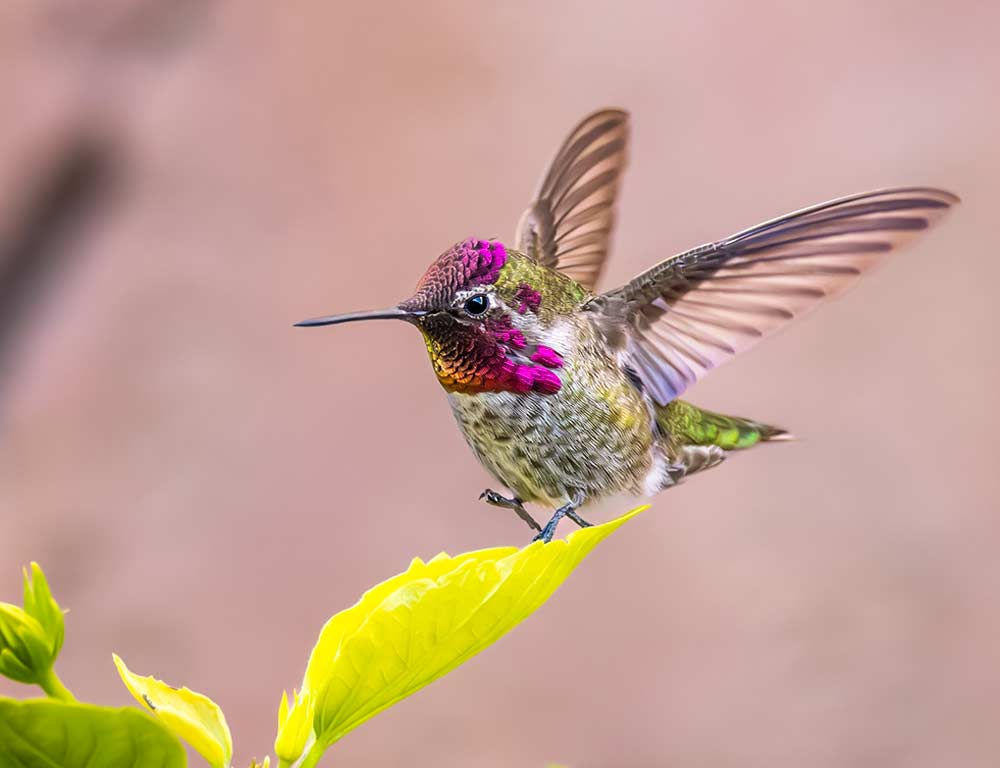
- Scientific Name: Calypte anna
- Population: Common on the west coast, expanding range
- Life Span: 3 to 5 years
- Size: Approximately 3.5 to 4 inches
- Weight: About 3 to 6 grams
- Food: Nectar, supplemented with insects and spiders
- Wingspan: 4 to 4.5 inches
Named after Anna Masséna, Duchess of Rivoli, Anna’s Hummingbird brings its charm to the West Coast, occasionally venturing into parts of Oklahoma.
With iridescent green plumage and males featuring a vibrant rose-pink throat, they add a splash of color to the local avian population.
Anna’s Hummingbirds are known for their year-round residency in certain areas, defying the migratory pattern of many other hummingbird species.
Their lifestyle revolves around constantly searching for nectar from flowering plants, supplemented by small insects and spiders.
These adaptable hummingbirds showcase a unique resilience to diverse environmental conditions, making them a fascinating part of Oklahoma’s avian tapestry, where they contribute to the intricate dance of nature with their delicate and swift movements.
7. Mexican Violetear
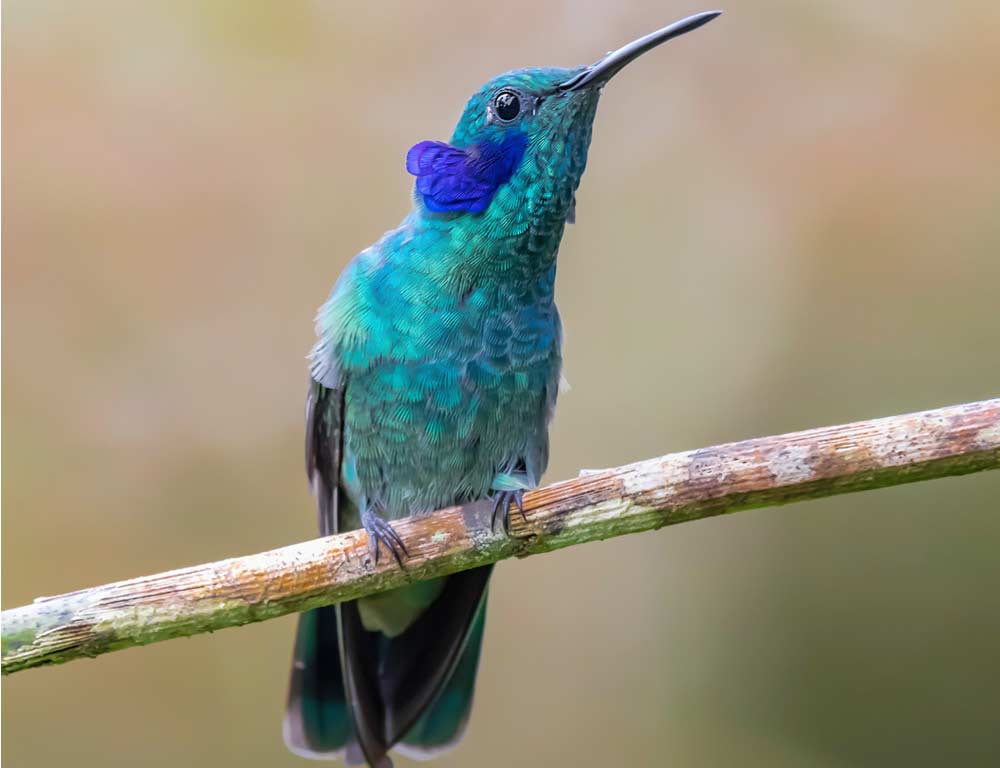
- Scientific Name: Colibri thalassinus
- Population: Native to Mexico, occasional sightings in the southwestern U.S.
- Life Span: 3 to 5 years
- Size: Medium-sized, approximately 4 to 5 inches
- Weight: About 6 to 12 grams
- Food: Nectar, supplemented with small insects
- Wingspan: 5 to 6 inches
The Mexican Violetear, a dazzling hummingbird species, primarily resides in the vibrant landscapes of Mexico but occasionally graces southwestern parts of the United States, including regions of Oklahoma.
Identified by the vibrant violet patch on their ear cover, these medium-sized hummingbirds contribute a touch of exotic beauty to the local avian scene.
Their lifestyle revolves around a nectar-rich diet from visits to various flowering plants. Mexican Violetears are agile fliers capable of rapid and intricate maneuvers as they extract nectar with their specialized bills.
While their presence in Oklahoma might be sporadic, these hummingbirds play a unique role in the region’s ecological diversity, showcasing the interconnectedness of different habitats and the fascinating migratory patterns of avian species.
8. Broad-billed Hummingbird
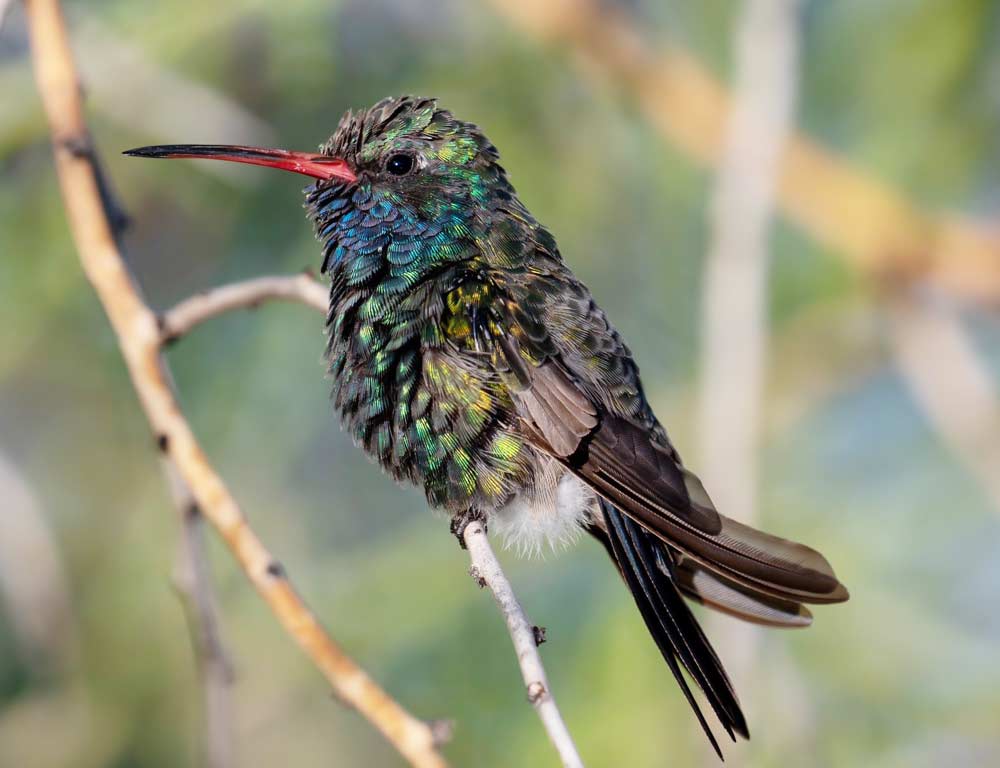
- Scientific Name: Cynanthus latirostris
- Population: Resident in southwestern U.S. and Mexico
- Life Span: 3 to 5 years
- Size: Small to medium-sized, approximately 3.5 to 4 inches
- Weight: About 3 to 6 grams
- Food: Nectar, supplemented with small insects
- Wingspan: 4 to 5 inches
The Broad-billed Hummingbird, with its strikingly vibrant plumage and distinctive broad bill, is a resident of the southwestern United States and Mexico, bringing its allure to parts of Oklahoma.
Recognizable by its dazzling metallic green and blue colors, this hummingbird species plays a vital role in pollination as it flits between flowers in search of nectar.
Their lifestyle is marked by agile flight patterns and precise hovering as they extract nectar with their specialized bills. Broad-billed Hummingbirds are also known for their territorial behavior, defending prime feeding spots with determined vigor.
The intertwining of their foraging activities and courtship displays adds a captivating dimension to the avian tapestry of Oklahoma, contributing to the intricate balance of nature in this diverse region.
Wrapping Up
These are the types of hummingbirds you can see in this place. Oklahoma’s hummingbirds, with their diverse species and enchanting lifestyles, exemplify the intricate beauty of nature.
From the ubiquitous Ruby-throated to the occasional Mexican Violetear, these tiny avian wonders bring vibrancy to the state’s ecosystems.
Their migratory journeys, delicate foraging, and dazzling displays underscore their crucial role as pollinators, enriching the natural tapestry of Oklahoma.
Observing these feathered gems is not merely an ornithological delight but a testament to the delicate balance and resilience of the state’s biodiversity.